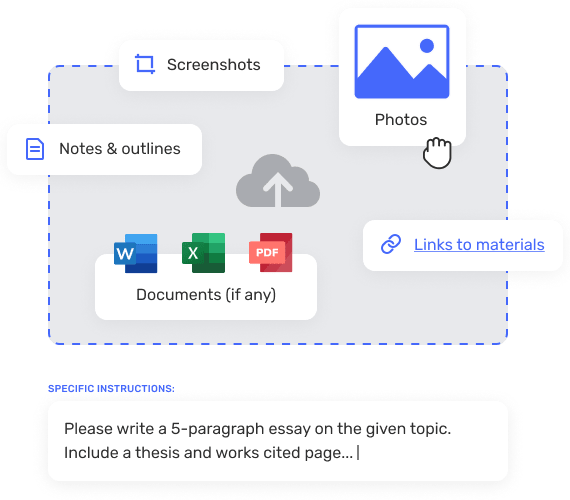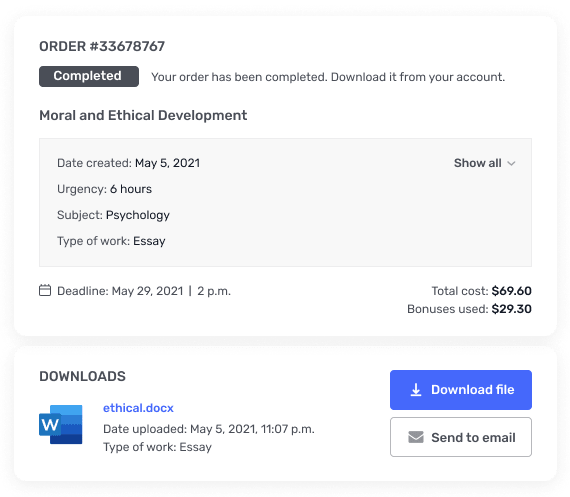e BM350 Online Exam
Part 1 of 1 – 90.0/
100.0 Points
Question 1 of 20
5.0/ 5.0 Points
As economies advance, a growing proportion of their
activities focuses on the production of:
A. products.
B. events.
C. experiences.
D. services.
Question 2 of 20
0.0/ 5.0 Points
Companies address needs by putting forth a __________, a set
of benefits that they offer to customers to satisfy their needs.
A. brand
B. value proposition
C. deal
D. marketing plan
Question 3 of 20
0.0/ 5.0 Points
__________ goods constitute the bulk of most countries’
production and marketing efforts.
A. Durable
B. Impulse
C. Physical
D. Luxury
Question 4 of 20
5.0/ 5.0 Points
If a marketer uses warehouses, transportation companies,
banks, and insurance companies to facilitate transactions with potential
buyers, the marketer is using a:
A. service channel.
B. distribution
channel.
C. communication
channel.
D. relationship
channel.
Question 5 of 20
5.0/ 5.0 Points
Michael Porter’s value chain would identify which of the
following as a support activity?
A. Shipping out
final products
B. Marketing
products
C. Procurement
D. Servicing
products
Question 6 of 20
5.0/ 5.0 Points
What are hollow corporations?
A. Companies that
market their products through franchisees
B. Companies that
have liabilities exceeding their assets
C. Companies that
outsource all production to suppliers
D. Companies that do
not have any physical presence and only operate online
Question 7 of 20
5.0/ 5.0 Points
The success of online purchasing resulted in __________ in
the delivery of products and services by intervening in the traditional flow of
goods through distribution channels.
A. disintermediation
B. diversification
C. reduced
competition
D. deregulation
Question 8 of 20
5.0/ 5.0 Points
When companies measure the number of people who are willing
and able to buy their products, they are measuring:
A. demand.
B. price elasticity.
C. real needs.
D. standard of
living.
Question 9 of 20
5.0/ 5.0 Points
The __________ in the value chain cover the sequence of
bringing materials into the business (inbound logistics), converting them into
final products (operations), shipping out final products (outbound logistics),
marketing them (marketing and sales), and servicing them (service).
A. operations
processes
B. manufacturing
processes
C. primary
activities
D. secondary
activities
Question 10 of 20
5.0/ 5.0 Points
__________ has three characteristics: (1) it is a source of
competitive advantage in that it makes a significant contribution to perceived
customer benefits; (2) it has applications in a wide variety of markets; and
(3) it is difficult for competitors to imitate.
A. Core competency
B. Market sensing
process
C. Corporate social
responsibility
D. Strategic
business unit
Question 11 of 20
5.0/ 5.0 Points
A(n) __________ is when a company might seek new businesses
that have no
relationship to its current technology, products, or
markets.
A. concentric
strategy
B. diversification
strategy
C. horizontal
strategy
D. intensive growth
strategy
Question 12 of 20
5.0/ 5.0 Points
The “Malaysia, Truly Asia” ad campaign that
showcased Malaysia’s beautiful landscape and its multicultural society in order
to attract tourists is an example of __________ marketing.
A. event
B. property
C. service
D. place
Question 13 of 20
5.0/ 5.0 Points
The last step in the value creation and delivery sequence is
__________ the value where the sales force, sales promotion, advertising, and
other communication tools announce and promote the product.
A. developing
B. positioning
C. communicating
D. reversing
Question 14 of 20
5.0/ 5.0 Points
James Frank has been put in charge of gathering marketing
intelligence, disseminating it within his organization, and eventually
directing action on the information. Mr. Frank’s task is best described as part
of the:
A. market-sensing
process.
B. new-offering
realization process.
C. customer
acquisition process.
D. customer
relationship management process.
Question 15 of 20
5.0/ 5.0 Points
Juan Garcia plans the daily promotional releases about his
company’s products and services. He can be described as a __________ planner.
A. strategic
B. selective
C. tactical
D. niche
Question 16 of 20
5.0/ 5.0 Points
Value delivery process can be divided into three phases, out
of which “choosing the value” implies __________, which is the
essence of strategic marketing.
A. segmentation,
developing, and delivering
B. targeting,
positioning, and communicating
C. targeting,
positioning, and delivering
D. segmentation,
targeting, and positioning
Question 17 of 20
5.0/ 5.0 Points
A characteristic of a __________ is that it can be a single
business or collection of related businesses that can be planned separately
from the rest of the company.
A. strategic
business unit
B. subsidiary unit
C. merged unit
D. niche market unit
Question 18 of 20
5.0/ 5.0 Points
The __________ includes the actors involved in producing,
distributing, and promoting an offering. The main actors are the company,
suppliers, distributors, dealers, and the target customers.
A. economic
environment
B. management
environment
C. strategic
environment
D. task environment
Question 19 of 20
5.0/ 5.0 Points
A __________ is a cluster of complementary products and
services that are closely related in the minds of consumers but are spread
across a diverse set of industries.
A. metamarket
B. vertically
integrated market
C. horizontally
integrated market
D. marketspace
Question 20 of 20
5.0/ 5.0 Points
Which of the following holds that consumers prefer products
that are widely available and inexpensive?
A. The product
concept
B. The production
concept
C. The selling
concept
D. The marketing
concept




